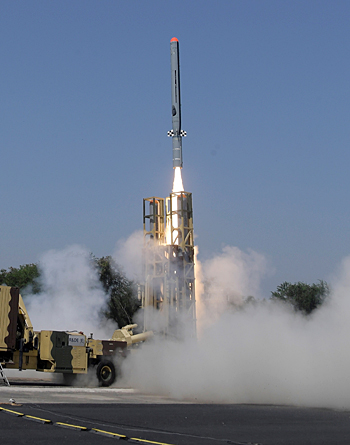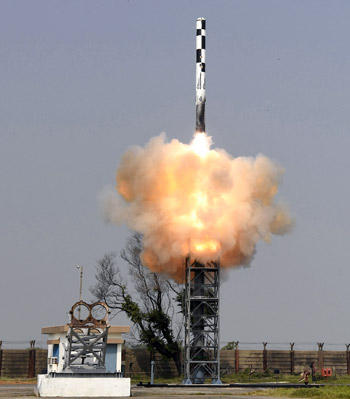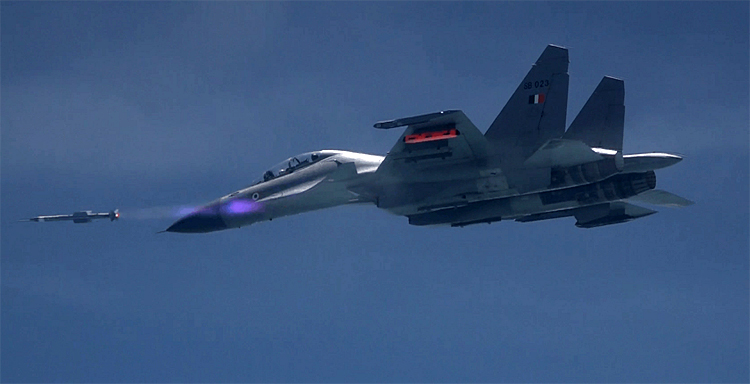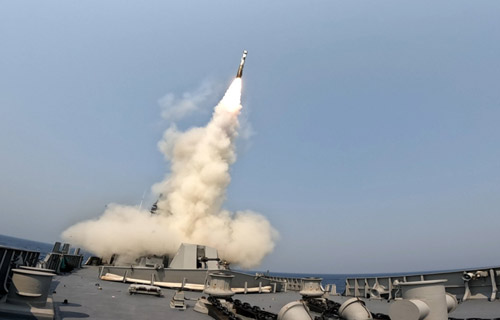INDIAN ARMED FORCES CHIEFS ON OUR RELENTLESS AND FOCUSED PUBLISHING EFFORTS

The insightful articles, inspiring narrations and analytical perspectives presented by the Editorial Team, establish an alluring connect with the reader. My compliments and best wishes to SP Guide Publications.

"Over the past 60 years, the growth of SP Guide Publications has mirrored the rising stature of Indian Navy. Its well-researched and informative magazines on Defence and Aerospace sector have served to shape an educated opinion of our military personnel, policy makers and the public alike. I wish SP's Publication team continued success, fair winds and following seas in all future endeavour!"

Since, its inception in 1964, SP Guide Publications has consistently demonstrated commitment to high-quality journalism in the aerospace and defence sectors, earning a well-deserved reputation as Asia's largest media house in this domain. I wish SP Guide Publications continued success in its pursuit of excellence.
Indigenous Missiles
Empowering India's defence & security, indigenous missiles soar high
 |
The Author is Former Director General of Information Systems and A Special Forces Veteran, Indian Army |

On April 18, 2024, India successfully flight-tested the Indigenous Technology Cruise Missile (ITCM) from complex-III of the Integrated Test Range (ITR) off the Odisha coast. Designed and developed by the Defence Research and Development Organisation (DRDO), the missile was tested with turbofan engine MANIK. The indigenous propulsion system developed by the Gas Turbine Research Establishment (GTRE), Bangalore demonstrated reliable performance in the tests. The propulsion system and all subsystems were also successfully validated during the developmental trial.
Equipped with the new turbofan engine, the ITCM missile was tested in full operational configuration. The missile reached the desired cruise altitude, which was monitored from Sukhoi Su-30 MKI aircraft of the Indian Air Force (IAF), as well as several range sensors like radar, electro optical tracking system and telemetry deployed by ITR at different locations to ensure complete coverage of the flight path. DRDO Chairman Samir V. Kamat congratulated the entire team for the successful mission. Defence Minister Rajnath Singh said successful development of the indigenous long range subsonic cruise missile powered by indigenous propulsion is a major milestone for Indian Defence R&D.
India delivered the BrahMos missiles to the Philippines under a $375 million deal signed in 2022

The test on April 18, 2024, was a second consecutive success during which the missile followed the desired path using waypoint navigation and demonstrated very low altitude sea-skimming flight. An earlier attempt on October 28, 2022 failed as the system developed a snag in the engine after separation of the booster stage. However, fitted with an upgraded radio frequency seeker and MANIK engine, the missile was test fired successfully on February 21, 2023.
Based on the subsonic cruise missile Nirbhay, the ITCM is also equipped with advanced avionics and software to ensure better and reliable performance. The missile has been developed by Bangalore-based Aeronautical Development Establishment (ADE), a lab of DRDO, along with contributions from other laboratories and Indian industries. The two-stage ICTM is six-metre long and weighs around 1.5 tonne. It can cruise at a speed of 0.9 Mach and strike targets at a distance of up to 1,000 km. The missile will supplement the Indo-Russian joint venture supersonic cruise missile BrahMos. The missile has various sensor capabilities like Digital Scene Matching Area Correlator (DSMAC), Data link, NavIC and the like.
The Astra MK-2 is reportedly capable of reaching distances of up to 130-160 km
On April 19, 2024, India delivered the BrahMos missiles to the Philippines under a $375 million deal signed in 2022. India has reportedly also been in talks with Indonesia and Vietnam, both of which have maritime disputes with China, to sell them BrahMos missiles. India’s defence exports hit a record 210.8 billion rupees ($2.5 billion) last financial year, up more than 32 per cent from 2022-23, with the Philippines’ BrahMos missiles accounting for the largest slice of the export pie. Delhi wants to export 350 billion rupees worth of arms and weaponry this financial year.

Also, news reports of April 19, 2024 stated that the DRDO is getting ready to conduct the inaugural test of the Astra Mark 2 air-to-air missile. With a strike range of 130 km and capability to target the enemy beyond visual range (BVR), the significant development aims to bolster the firepower of the IAF fighter aircraft. The Astra MK-1 missiles, a predecessor to the MK-2, have already been successfully inducted into both the Indian Air Force and the Navy. The Astra series of air-to-air missiles are part of the Astra programme, which aims to enhance the aerial combat capabilities of the Indian Armed Forces.
The Astra MK-3 missile will rival the French-made Rafale fighter jet's primary long-range Meteor BVR missile
In May 2022, the IAF and the Indian Navy placed orders for 248 Astra MK-1 missiles (200 for the IAF and 48 for the Navy) at a cost of Rs 2,971 crores from Bharat Dynamics Limited (BDL). All these missiles are expected to be delivered within six years from the date of signing the contract. The Astra MK-1 air-to-air BVR missile is currently used by the IAF integrated with the Sukhoi Su-30 MKI fighter jets.
In a press conference on October 4, 2022, the IAF released footage of an Astra MK-2 launched from a Su-30 MKI using Unified Common Launcher developed by DRDO, with industry partners, for air-to-air missiles. The Astra series, namely Astra IR with its 80 km range, Astra MK-1, Astra MK-2, and the anticipated Astra MK-3 employs the use of a common ejector launcher system, the ‘Astra launcher.

The Astra MK-2 is a longer-range variant of the Astra MK-1 missile. Unlike the single-pulse rocket motor used in the Astra MK-1, the Astra MK-2 uses dual-pulse rocket motor. This dramatically increases the range and kill probability of the missile. The Astra MK-2 is reportedly capable of reaching distances of up to 130-160 km. The missile is furnished with a dual-pulse solid rocket motor to extend its range. The inclusion of an AESA radar seeker is also anticipated. The use of a laser proximity fuse is anticipated for increased precision. Also, both Astra missiles are equipped with a smokeless propulsion system for a cleaner discharge. The missile’s Electronic Counter-Countermeasure (ECCM) capabilities allow for unrestricted operation in an Electronic Counter-Countermeasure (ECM) environment.
The DRDO is now developing a critical component for a new long-range, air-launched Low Observable Air-Launched Cruise Missile (LOALCM)

The more advanced and longer-range missile Astra MK-3 is also under development by the DRDO. This missile will be using a solid-fuelled ducted ramjet (SFDR) engine giving the missile a maximum strike of range of more than 300 km. The Astra MK-3 missile will rival the French-made Rafale fighter jet's primary long-range Meteor BVR missile.
According to news reports of April 24, 2024, India tested a new variant of a medium range ballisic missile (MRBM), which was conducted by the triservice Strategic Forces Command (SFC). Without specifying the exact kind of missile tested, the Ministry of Defence (MoD) said the test had proven the operational capability of the MRBM and validated new technologies. Unnamed sources said it was likely to be the land version of B-O5 or K-15 submarine-launched ballistic missile. Arihant, India’a first nuclear-powred submarine is equipped with K-15 SLBM.

The DRDO is now developing a critical component for a new long-range, air-launched Low Observable Air-Launched Cruise Missile (LOALCM). The cutting edge technology for the LOALCM will involve developing the Active Electronically Scanned Array (AESA) seeker incorporating special materials and shaping to minimise radar signatures. This would make it that much harder for enemy radars to detect the missile; making it easier for the radar to penetrate enemy defences more effectively and strike targets with precision. The LOALCM is reportedly to have a range of 250 km, making it suitable for deep strike missions; to strike targets of strategic value with precision.





